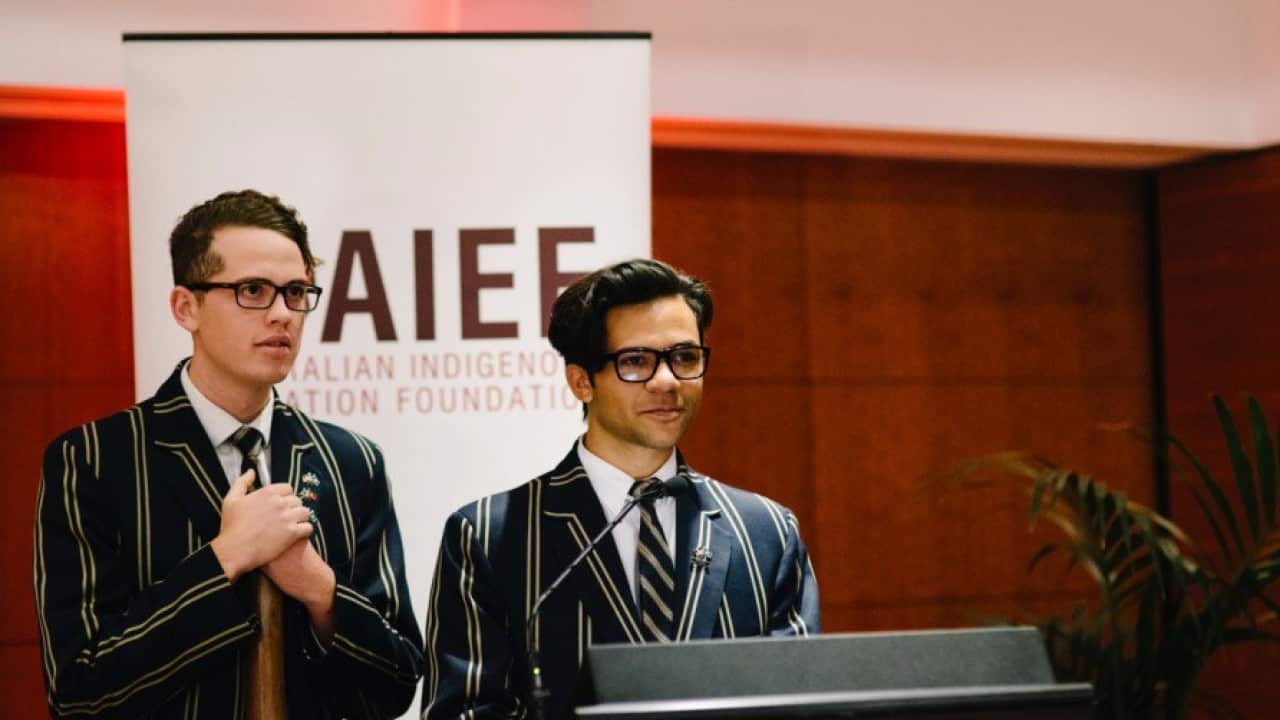The creative force behind the now commonly used spelling of the word 'blak,' in and amongst First Nations communities, is award-winning multi-media artist Destiny Deacon.
Ms Deacon staunchly redefined both the spelling and the meaning of the word 'black' as a direct response to non-Indigenous people's labelling and consistent misrepresentations of our people.
An Erub/Mer (Torres Strait) and K'ua K'ua (Cape York) woman, Ms Deacon smashed through metaphoric walls since she came to artistic prominence some thirty years ago. Ms Deacon created a pathway for contemporary First Nation Australian artists to express themselves individually and collectively.
 Curator Clare Williamson along with fellow curator (and daughter of the late legendary activist Uncle Charles Perkins) Hetti Perkins said in a written program of the 1994 collaborative First Nations exhibition Blakness; Blak City Culture: "Destiny Deacon developed the term 'Blak' as part of a symbolic but potent strategy of reclaiming colonialist language to create means of self-definition and expression."
Curator Clare Williamson along with fellow curator (and daughter of the late legendary activist Uncle Charles Perkins) Hetti Perkins said in a written program of the 1994 collaborative First Nations exhibition Blakness; Blak City Culture: "Destiny Deacon developed the term 'Blak' as part of a symbolic but potent strategy of reclaiming colonialist language to create means of self-definition and expression."

Virginia Fraser and artist Destiny Deacon with joint work from the '2005 Colour Blinded' series at the National Gallery in Canberra, (AAP Image/Alan Porritt) Source: AAP
Ms Deacon began using the word and spelling 'blak' in her work, taking on the 'colonisers' language and flipping it on its head. Deacon asserted an expression of urban Aboriginal identity that is authentic - baring little, if any, resemblance to the coloniser's 'boxed in' one-dimensional definition of Aboriginal Australians that, even today, continues to be derogatory and misinformed.
"Growing up, I always heard the words 'You little black c…s from white people. It's still common (to have) black c….s being shouted at us," Deacon said.
"I just wanted to take the 'C' out of 'black.' I was able to convince Hetti Perkins and Claire Williamson to alter their curated urban Indigenous exhibition to 'Blakness: Blak City Culture (ACCA, Melbourne) without the 'c' in 1994!," Deacon explained at the Cairns Indigenous Art Fair at the Cairns Art Gallery this year for the exhibition QUEEN'S LAND- BLAK Portraiture.
Related Reading

Acknowledging Country: a modern history
Deacon, born in 1957 in Maryborough, Queensland, is a well-known photographer, artist and an impressive person with long dark wavy hair and striking features. She holds an air of grace and dignity when speaking to an audience or within smaller groups at openings of her exhibitions or artist talks. She is casual, relatable and humorous in her delivery and has a creative process that explores numerous thoughts, emotions and concepts before honing her craft.
Since 1990, Ms Deacon has been consistently and prolifically working as an artist with a particular focus on installations and photography. Her exhibitions and collections are an almost-yearly occurrence. Ms Deacon has resided in Melbourne, Victoria from the age of two years old, where she grew up with her mother, seven siblings and a large Koori community.
Deacon is known world-wide for her widespread use of old 'blak' dolls that are often the focal part of her intriguing installations. The dolls seem to serve as a way to reflect the trauma and stress First Nations people of Australia endure as the direct result of colonial policies and insidious racism.
"I like the dolls because it's too much hard yakka getting people to pose, "Deacon said at an artist talk in Queensland several years ago.
"I feel sorry for little dolls in trash and treasure markets, I rescue them," she said.
Fundamentally Deacon rejects labels and preconceived constructs of identity and race as her work is ultimately an expression of deconstructing, humourising and challenging the labels and constructs that are 'forced' on us as First Nations people in this nation by mainstream society.
As Deacon exemplifies, First Nations individuals in Australia are as unique from one another as they are connected. It's simple, yet complicated and Deacon's work, spanning a twenty-five-year period, lays bare these gross misconceptions and pays satirical homage to the backward and blatantly wrong stereotypes 'forced' on our people.
2018 recipient of the inaugural Yalingwa fellowship
Deacon, now an internationally renowned multi-media artist and the 2018 inaugural recipient of the $60,000 Yalingwa Fellowship, began her creative career in photography. She had no intentions of becoming an artist and was not artistically trained but by her own admission, she 'sits on the lounge and thinks a lot.' Effectively Deacon, when sitting in a kind of waking meditation, can manifest how she'd like to express an idea or build on a train of thought that may have already developed "wheels".
Deacon works across many artistic mediums including photography, performance, video, prints and installations.
At sixty-two years of age Deacon has exhibited nationally and internationally in over one hundred exhibitions including in Cuba, New York, New Zealand and Japan.
"I'm amazed that I get (all) this work," Deacon has said during an artist talk with Art Gallery NSW in 2008.
(For me) it's about creating a world of my own outside my own world.
"(For me) it's about creating a world of my own outside my own world."
And a world of her own outside of her world has indeed been created. It is the blak world that First Nations artists and producers across our nation have taken on with a staunch awareness and humble appreciation.
Kate L. Munro is a Gamilaroi journalist, specialising in the Aboriginal arts sector.
Deacon's work is held in many, if not all, large museums in Australia.


